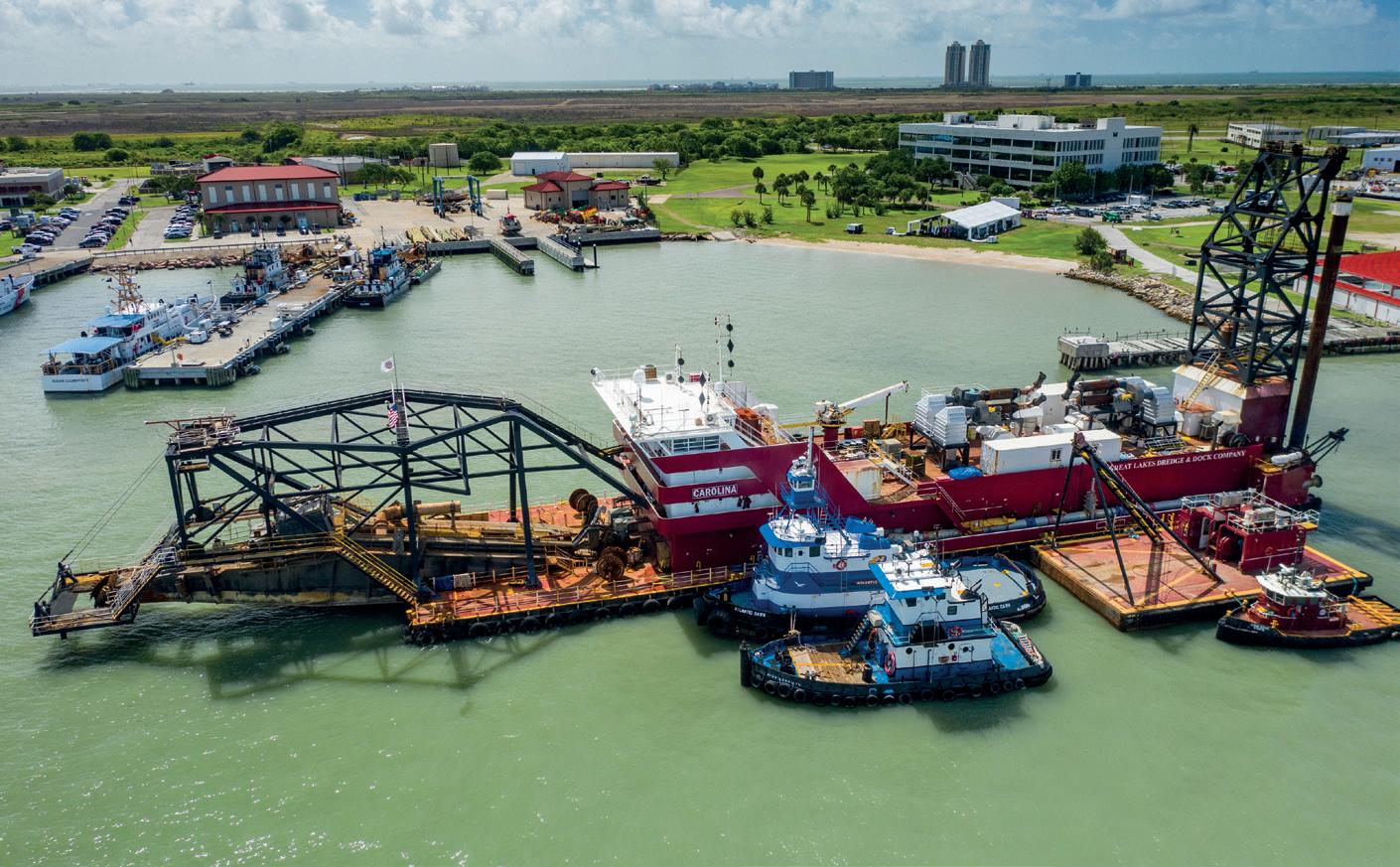
2 minute read
Houston expansion will generate traffic
HERE COMES THE FLOOD
INFRASTRUCTURE • MASSIVE INVESTMENT AT THE PORT OF HOUSTON PROMISES TO DELIVER A LOT MORE PRODUCT. MATLACK LEASING SUGGESTS HOW ALL THIS MIGHT BEST BE TRANSPORTED
THE HOUSTON AREA represents the largest petrochemical manufacturing region in the US and the Port of Houston is the country’s largest exporter of petroleum, oil and chemical products. In terms of waterborne tonnage, it is the nation’s largest port – and about to get even busier thanks to a $142.5m investment as part of the Infrastructure Investment and Jobs Act, known as Phase 3 of Project 11.
Project 11 is a six-phase programme to upgrade the waterway and infrastructure between Houston and Galveston, including the dredging, widening and modernisation of the Houston Ship Channel, which is already home to some 200 public and private terminals. The work anticipates demographic growth and increased demand for imports, as well as the larger vessels arriving in Houston through the newly widened Panama Canal.
According to the Port of Houston, the work will not only add greater capacity but will also maximise operational performance, while integrating new technologies to add value, promote sustainability and improve resilience.
What this means for the bulk liquid supply chain is that there will be an increase in the number of intermodal containers, tank containers and bulk refined products and chemicals to be handled in and transported through the Port of Houston, with a corresponding need for an increase in the availability of appropriate transport equipment.
In particular, says Matlack Leasing, this will mean higher demand for tank chassis and chemical trailers (MC 307, DOT 407, DOT 412, etc) and drop-frame tank container chasses to move the inbound and outbound cargoes.
PLAN AHEAD Anticipating this increased demand, Matlack says that working with a local lessor to provide the necessary chemical transport equipment can offer flexibility during the expansion phase and to cope with the need to increase locally operating fleets in the post-construction period. “For chemical manufacturers, distributors and logistics companies, building relationships now will provide the equipment required to take advantage of future business opportunities flowing through the Port of Houston and in the Gulf Coast region,” Matlack says.
There are some basic considerations when moving chemicals on the roads, with the proper equipment vital: MC 307 and DOT 407 tank trailers offer stability, a high load-bearing capacity and stainless steel tanks, lined if needed, to accommodate hazardous chemicals. “Always use the proper equipment for your product and route,” Matlack warns. It is also important to have an experienced driver or operator who knows - and, importantly, follows – state and federal regulations applicable to the transport, storage and handling of hazardous materials.
There are some other considerations particular to doing business in the Gulf Coast region, not least the regular hurricane and flooding events that take place along the coast. As we have seen in recent winters, snow and ice are not unknown this far south. “When transporting chemicals, it’s important to know forecasted weather conditions, emergency routes and parking areas that will accommodate chemical trailers and tank chassis in an emergency,” Matlack advises.
Matlack Leasing specialises in providing tank trailers and tank chassis under lease arrangements, with an extensive fleet of different types of tank. It also has older tanks suitable for in-plant use or for long- or short-term storage of product. www.matlackleasing.com










